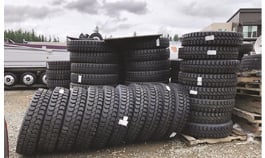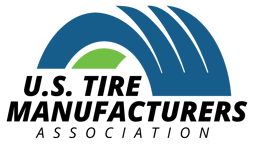Have you reviewed your Tire Program, lately? In part two of this Blog Series we provide best practices that can be applied to help keep your tire maintenance cost down and your drivers safe!
The U.S. Tire Manufacturers Association (USTMA) consumer awareness campaign is fast approaching. National Tire Safety Week, on June 27 – July 3, 2022 is the annual initiative aimed to spread awareness of the importance of proper tire care and maintenance.
We previously reviewed how tire cost is the second-highest expense within a fleet’s maintenance program.
 Everyone agrees that managing the tire program can be a daunting task for fleet managers. The programs are challenging to maintain and extremely expensive to have an “automated” system, resulting in having a dedicated technician manually track all information or hiring an outside vendor at an additional cost. Most major tire manufacturers have tire pressure monitoring systems (TPMS), but they can be cost-prohibitive to implement and difficult to manage. They also have tools that help track the tread depth of the tires and integrate with your fleet maintenance software, but it still requires an employee or service provider to enter and upload the information.
Everyone agrees that managing the tire program can be a daunting task for fleet managers. The programs are challenging to maintain and extremely expensive to have an “automated” system, resulting in having a dedicated technician manually track all information or hiring an outside vendor at an additional cost. Most major tire manufacturers have tire pressure monitoring systems (TPMS), but they can be cost-prohibitive to implement and difficult to manage. They also have tools that help track the tread depth of the tires and integrate with your fleet maintenance software, but it still requires an employee or service provider to enter and upload the information.

Below are some additional best practices to take into consideration for your fleet and help reduce unexpected costs:
- Schedule a tire pressure audit for equipment parked off-site
- Leverage the partnership with your tire provider and have fleet checks performed
- Make sure all yard tractors have magnets installed on the bumper to pick-up Foreign Object Debris (FOD)
- Have an established fleet air pressure and communicate this to operations and maintenance through yearly training, posted signs, and decals on the equipment
- Raise awareness and communicate lost tire counts along with costs due to low air pressures on a quarterly basis to drivers and technicians
- Perform a scrap analysis with your tire provider on an appropriate interval based on volume to determine reasons for failures
Continuous preventative care, training and ongoing tire checks will ensure your drivers stay safe and will save you money in the future.







